Conditions
Dry eye
Dry eye is one of the most common eye conditions diagnosed among millions of people in Canada and around the world.
Your eyes need to produce the right amount of tears to remain healthy–not too much, not too little, and just the right kind of tears.
Dry eye is a condition that affects how much tear film your eyes produce and the nature of the fatty oils, aqueous fluid, and mucus that make up tears.
What is dry eye?
Dry eye occurs when your eyes
- Don’t produce enough tears.
- Produce an excessive amount of tears.
- Don’t produce the right type of tears
Some forms of dry eye include:
- Aqueous deficient dry eye
- Evaporative dry eye
- Mixed dry eye
Aqueous deficient dry eye
Aqueous deficient dry eye typically affects your lacrimal glands–the glands that produce tears.
When the tear glands are inflamed, your eyes may not produce enough tears and result in aqueous deficient dry eye.
Evaporative dry eye
Evaporative dry eye occurs when the tear film in your eyes evaporates too quickly and fails to protect your eye.
This type of dry eye usually occurs when one of the three layers that make up tears–the glands that produce the outermost oily lacrimal layer don’t work as they should.
Mixed dry eye
Mixed dry is a combination of aqueous deficient and evaporative dry eye.
In this case, your eyes don’t produce enough tears, and the oily layer of your tear film is insufficient and unstable.
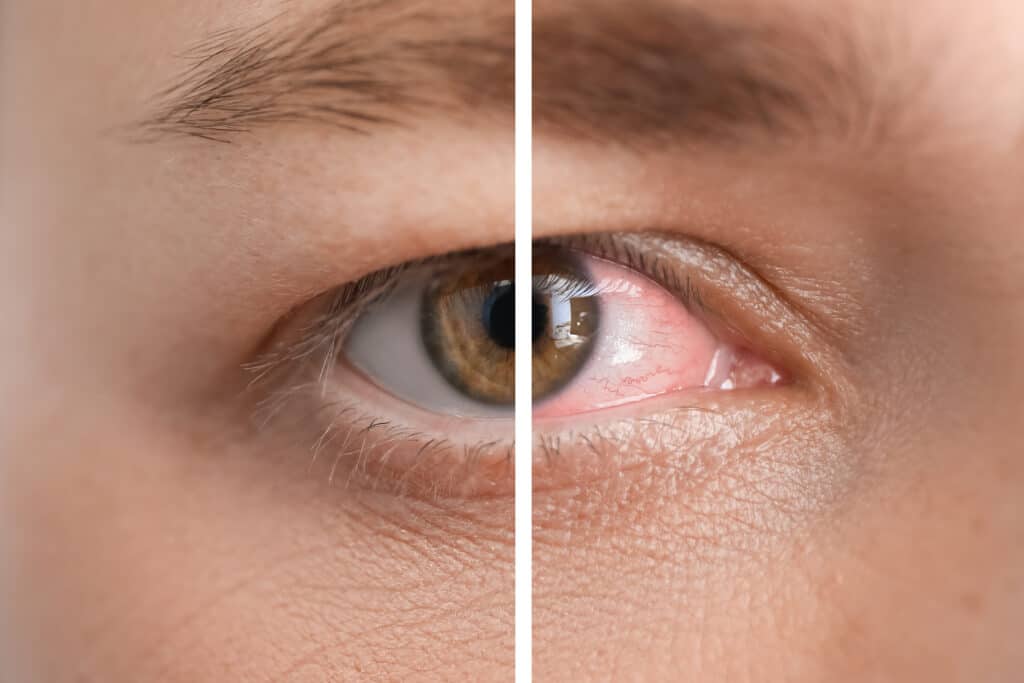

What causes dry eye?
Dry eye may be caused by an autoimmune condition or dysfunctional tear glands.
Aqueous deficient dry eye is usually the result of inflamed tear glands or inflammatory autoimmune diseases like Sjögren’s syndrome.
Evaporative dry eye occurs due to a dysfunctional meibomian gland. In cases of meibomian gland dysfunction (MGD), your tear glands don’t make enough of the oily lacrimal layer of the tear film.
If your eyes don’t produce enough of this oily film, the watery layer beneath it evaporates too quickly which leads to dry eye.
Dry eye may also be a symptom of diseases such as:
- Diabetes
- Thyroid eye disease
- Blepharitis
- Rheumatoid arthritis
- Lupus
- Entropion (turned-in eyelids)
- Ectropion (turned-out eyelids)
You may also be at a higher risk of dry eye if you:
- Are 50 or older
- Are going through menopause
- Have a diet low in vitamin A
- Are exposed to excessive smoke, wind, or extremely dry weather
- Spend long periods in front of a computer screen
- Use contact lenses for extended periods
- Have undergone refractive eye surgery like LASIK
Or if you take certains medications like:
- High blood pressure diuretics
- Beta-blockers for heart disease
- Heartburn medicine
- Antihistamines
- Sleeping pills
- Antidepressants
- Anti-anxiety medicine
Dry eye symptoms
Symptoms of dry eye are easy to identify because they may impair your vision and cause you intense discomfort.
Dry eye symptoms include the following:
- Burning or stinging eyes
- Gritty or scratchy eyes
- Red, irritated eyes
- Excessive tears
- Mucus in or around the eyes
- Blurry vision
- Light sensitivity
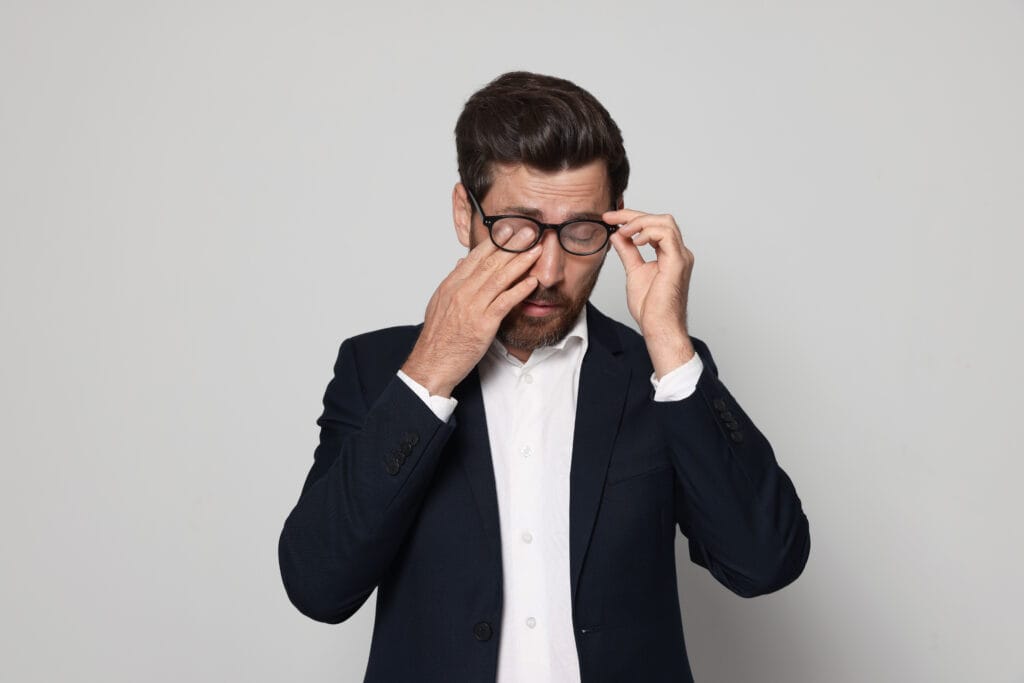
Dry eye diagnosis
An ophthalmologist will diagnose dry eye using a comprehensive eye exam and tests to measure the amount and consistency of your tears.
Dry eye diagnosis is established with the following procedures:
- Dilated eye examination
- Slit lamp exam
- Schirmer’s test
- Tear breakup time (TBUT) test

Dilated eye examination
It’s possible your opthalmologist may perform a dilated eye examination on your first visit, also known as a dilated fundus test or dilated fundus exam (DFE), to see into the back of your eye to rule out any retinal conditions, although this is done for thoroughness and not necessarily because of any connection to dry eye symptoms.
Your eye specialist will apply special medication called mydriatic agents to widen or dilate your pupils so they can clearly see and identify signs of damage to the retina.
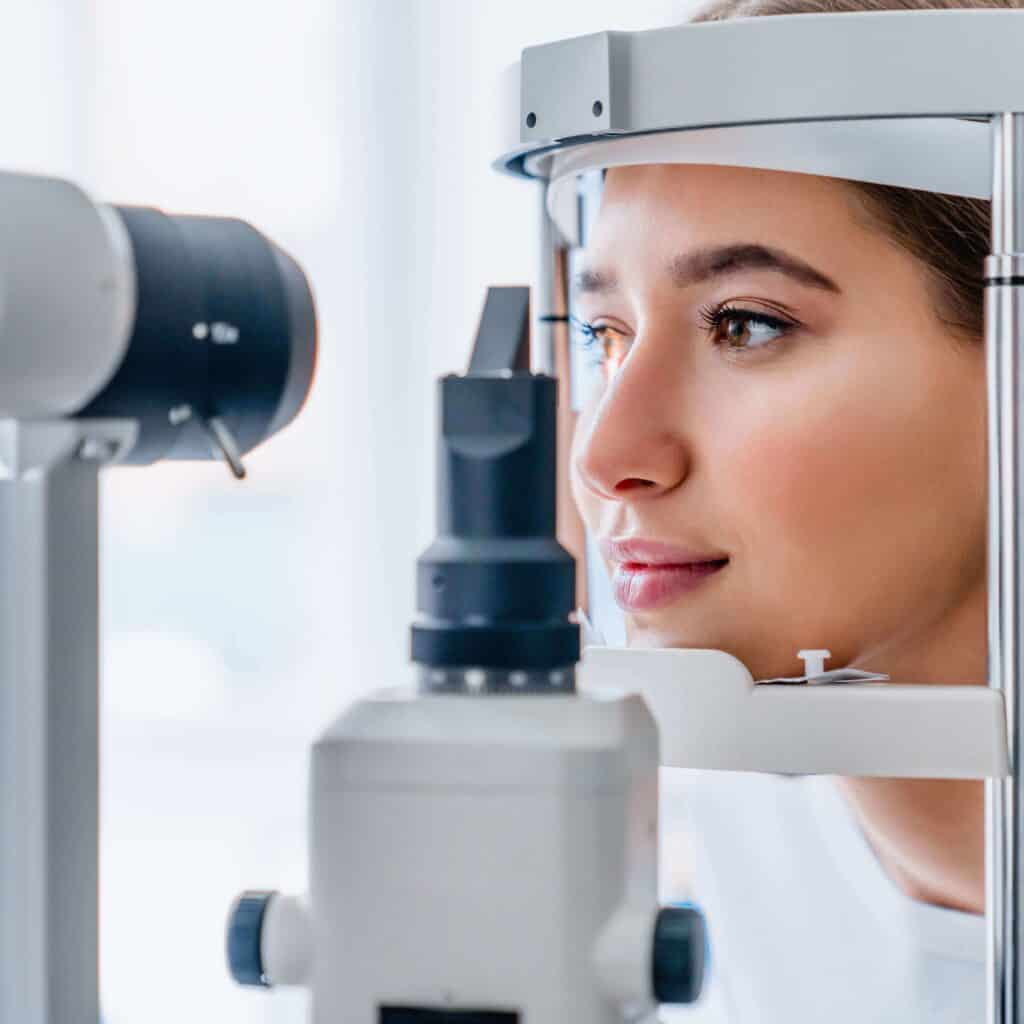
Slit-lamp biomicroscopy
Slit-lam biomicroscopy also uses mydriatic agents to dilate your pupils and offer a clear observation path to the vitreous or gel-like part of the eye cavity.
Slit-lamp biomicroscopy is typically used to identify a condition known as posterior vitreous detachment (PVD). However, in the case of dry eye, your ophthalmologist is looking for damage that may affect the tear-producing tissue inside your eye.

Schirmer’s test
A Schirmer’s test or Schirmer tear test (STT) is another procedure your ophthalmologist can use to evaluate your tear production.
Your eye doctor will place a very small piece of paper along the edge of your eyelid for a few minutes.
Your eyes will produce tears in response to this mild irritation and the eye specialist can measure how quickly your eye tears up, and the amount of tears made.
How fast the tears travel across the piece of paper will tell your ophthalmologist whether your tear glands function within accepted ranges.
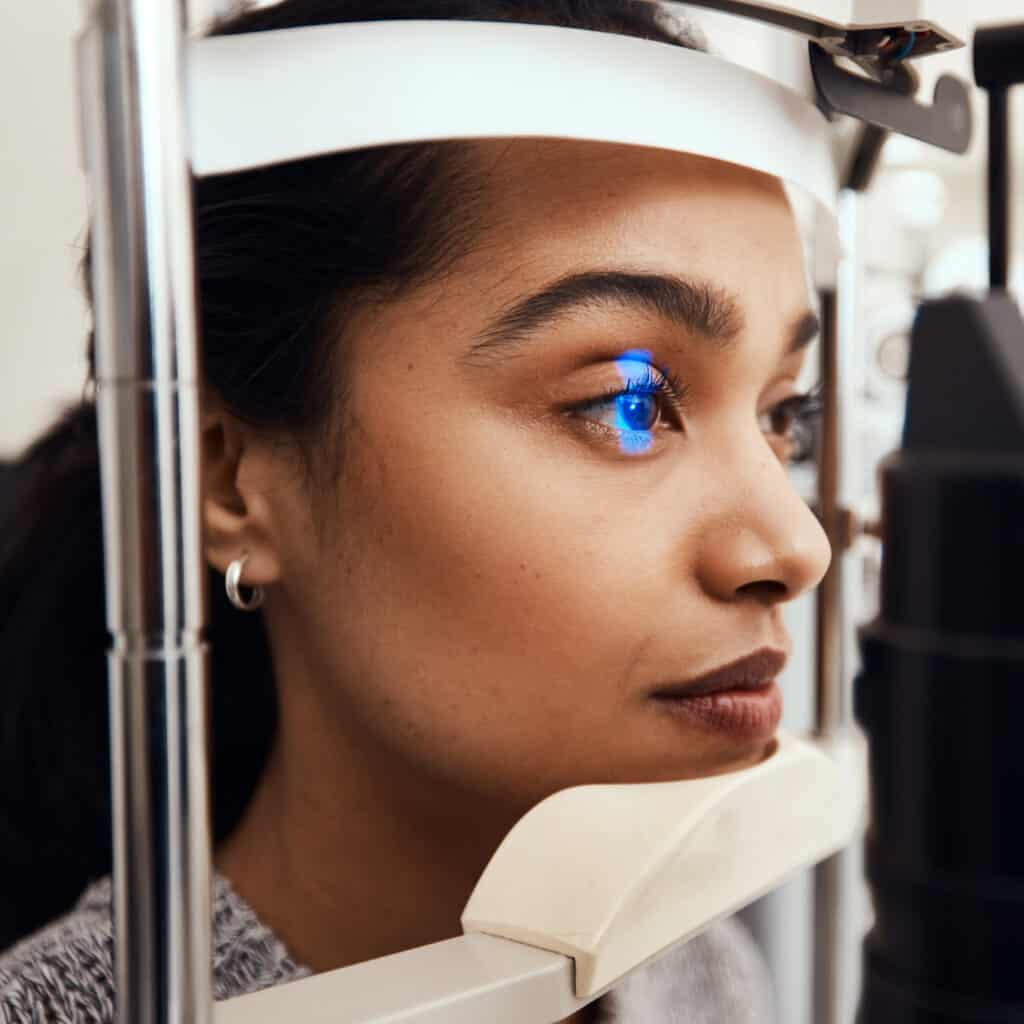
Tear breakup time (TBUT) test
A tear breakup time (TBUT) test will tell your eye specialist how quickly your tears evaporate which can indicate a case of evaporative dry eye.
During a TBUT test, the opthalmologist will inject a special dye into your eye and observe the tear film through a microscope.
If the tear film becomes unstable in under 10 seconds, you may be diagnosed with dry eye.
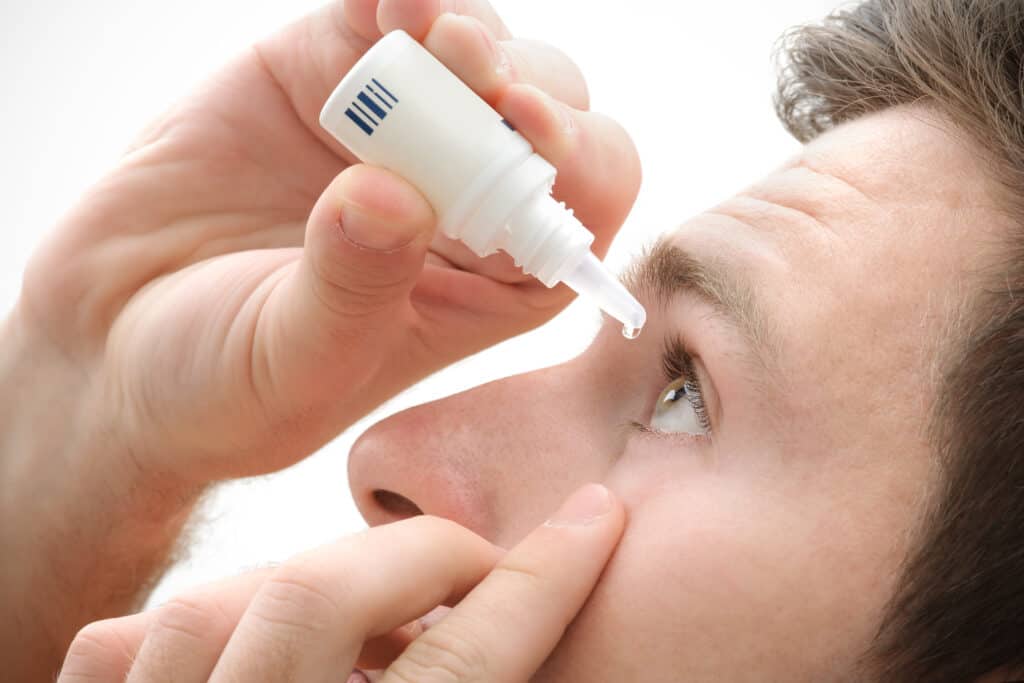
Dry eye treatment
Dry eye treatment usually involves medication in the form of eye drops and lifestyle changes recommended by your ophthalmologist.
Dry eye medication includes the following:
- Artificial tears or over-the-counter eye drops
- Moisturizing gels or ointments
- Prescription eye drops
In addition to dry eye medication, your eye specialists may recommend the following lifestyle changes:
- Changing the medication you use for another health condition if it causes dry eye
- Avoiding smokey or windy environments
- Avoiding air-conditioned spaces
- Using a humidifier
- Reducing screen time (computer, mobile phone, TV)
- Wearing sunglasses to protect your eyes from glare
- Drinking enough water
- Getting enough sleep and rest
Why choose Vision Pros to treat your dry eye?
- Experienced ophthalmology team of specialists with expertise in all areas of ophthalmology, optometry, and general eye care.
- Rapid access and referral to world-class comprehensive screening and cutting-edge treatment in a state-of-the-art ophthalmology clinic.
- Holistic, personal, and patient-centric approach to every aspect of eye care.
Book an appointment for your comprehensive eye examination today
- https://www.nei.nih.gov/learn-about-eye-health/eye-conditions-and-diseases/dry-eye
- https://www.nei.nih.gov/learn-about-eye-health/eye-conditions-and-diseases/dry-eye/causes-dry-eye
- https://www.aao.org/eye-health/diseases/what-is-dry-eye
- https://www.webmd.com/eye-health/eye-health-dry-eyes
- https://my.clevelandclinic.org/health/diseases/24479-dry-eye
- https://www.medicalnewstoday.com/articles/170743
- https://www.aoa.org/healthy-eyes/eye-and-vision-conditions/dry-eye?sso=y
- https://www.nhs.uk/conditions/dry-eyes/
- https://www.mountsinai.org/health-library/diseases-conditions/dry-eye-syndrome
- https://montrealgazette.com/opinion/columnists/christopher-labos-changing-advice-about-omega-3-and-dry-eyes
- https://www.ncbi.nlm.nih.gov/pmc/articles/PMC5685175/#:~:text=Meibomian%20gland%20dysfunction%20(MGD)%20is%20a%20term%20used%20to%20describe,discomfort%2C%20and%20evaporative%20dry%20eye.
- https://www.mountsinai.org/health-library/tests/schirmer-test
- https://www.ncbi.nlm.nih.gov/books/NBK559159/
- https://www.hopkinssjogrens.org/disease-information/diagnosis-sjogrens-syndrome/schirmers-test/